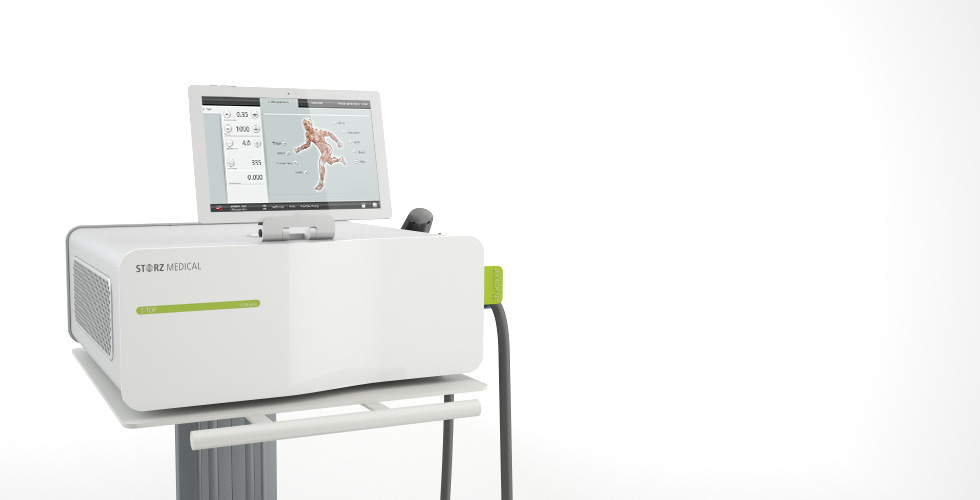Extracorporeal Shock Wave Therapy ( ESWT ) is a non-invasive procedure for the treatment of acute and chronic pain of the musculoskeletal system. Acoustic shock waves are characterized by a pressure surge with an extremely short rise time, which is then followed by an exponential drop in pressure and a brief phase of negative pressure. The shock waves used in ESWT focus or develop in the target tissue at the point where the pain is originating from. They cause an improved local blood circulation and metabolism. The primary means by which extracorporeal shock waves affect living tissue is based on the transformation of mechanical stimuli into biochemical or biomolecular signals.
What is the story behind ESWT?
The science behind ESWT is analogous to that of lithotripsy, a technology that makes use of acoustic shockwaves to break up kidney stones without surgery. The technique of using shockwaves to break up kidney stones has been around for nearly a quarter of a century. In the process of treating hundreds of thousands of patients, specialized machines were developed specifically with the idea of using the generated shockwaves in other parts of the body, e.g. to treat musculoskeletal conditions.

Conditions treatable with ESWT
Chronic pain is recognized as a worldwide epidemic. Common conditions such as Tennis Elbow, Golfers Elbow, calcaneal heel spurs, calcifications of the shoulder joint and ischemic muscle bands (trigger points) are a major cause of chronic pain. The use of ESWT to safely and successfully treat these conditions is supported by a wealth of clinical experience and scientific evidence.
In addition, shockwave technology is a valuable diagnostic tool for the precise localization myofascial trigger points.
Contraindications for ESWT?
ESWT is typically not used in the presence of bone tumors, certain metabolic bone conditions, and certain nerve or circulation disorders. ESWT is also not used in pregnant patients and at locations where there is an open growth plate. It is currently not used in areas where an infection is present. It also should not be used in conditions or at locations where gas or air is present in the body. On the basis of the patient’s general condition, the experienced, trained medical user in charge must decide whether the planned use is possible or not.
How successful is the therapy?
After only 2 or 3 sessions, over 80 % of patients report painlessness or significant pain reduction.
How is the therapy performed?
The therapist localizes the pain region by palpation or shock wave localization and discusses the findings with you. A skin gel is then applied to the treatment area to allow the shock waves to be introduced into the body almost painlessly and without any loss of energy. After these preparations, shock waves are released as the shock wave applicator is moved over the pain region in a circular motion.
Duration and frequency of the therapy
The therapy session takes between 5 and 10 minutes depending on the disorder to be treated. In general an average of 2 to 3 therapy sessions are necessary at weekly intervals.
Extracorporeal shock wave therapy is offered on a private basis and is only provided by highly patient- oriented surgeries
,